WordNet User Interface for WPF
This is a user interface for WordNet, developed on the Windows WPF platform. It uses a modified version of WordNet for Microsoft SQL Server, originally created by Michal Měchura.
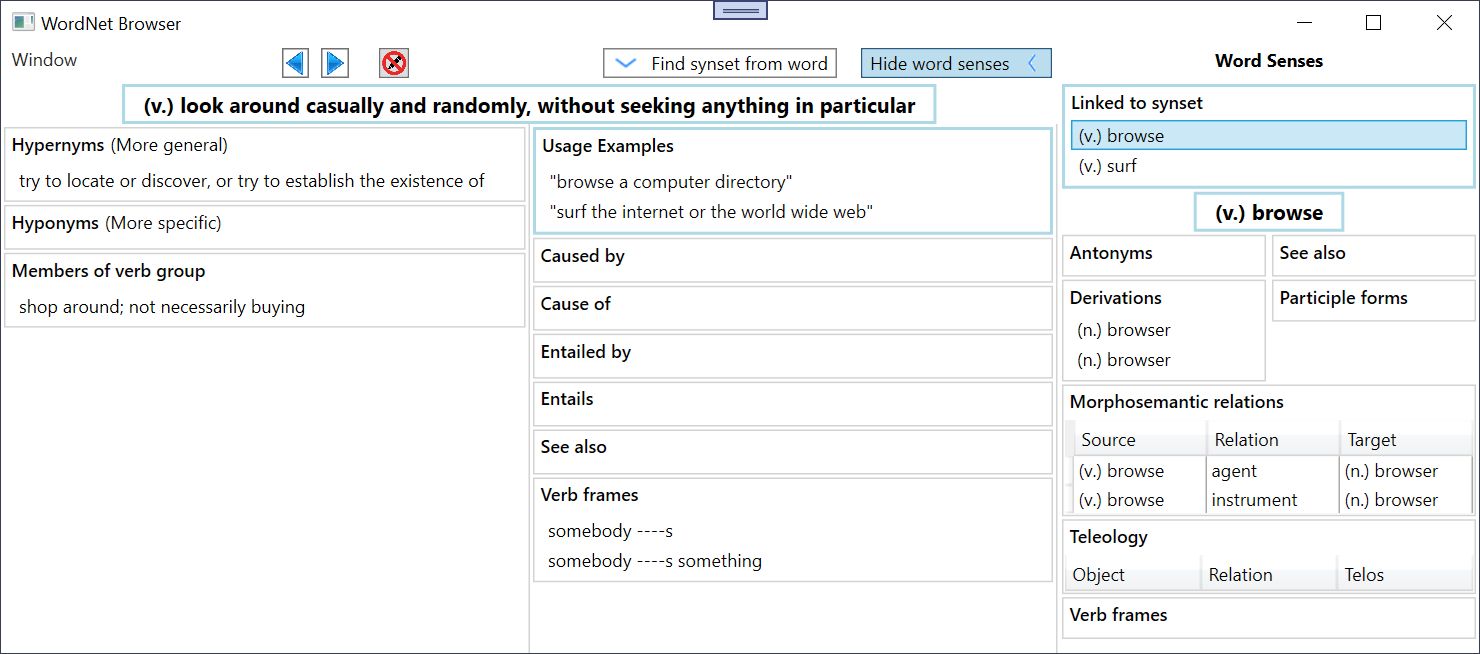
Browsing WordNet
The user interface is centered around synsets, not words – because that’s how WordNet itself is organized. The typical workflow is:
- Search for a word sense of interest;
- Use the word sense to find a related synset;
- Navigate through the network of synsets, using the relations between them like hyperlinks;
- (optional) Browse the network of word senses linked to a synset.
Finding a synset from a word
Before we can start browsing synsets, we first need to get a “toe-hold” into the network of synsets. When the WordNet Browser initially opens, it shows a tool at the top of the window that allows us to “Find synset from word”:
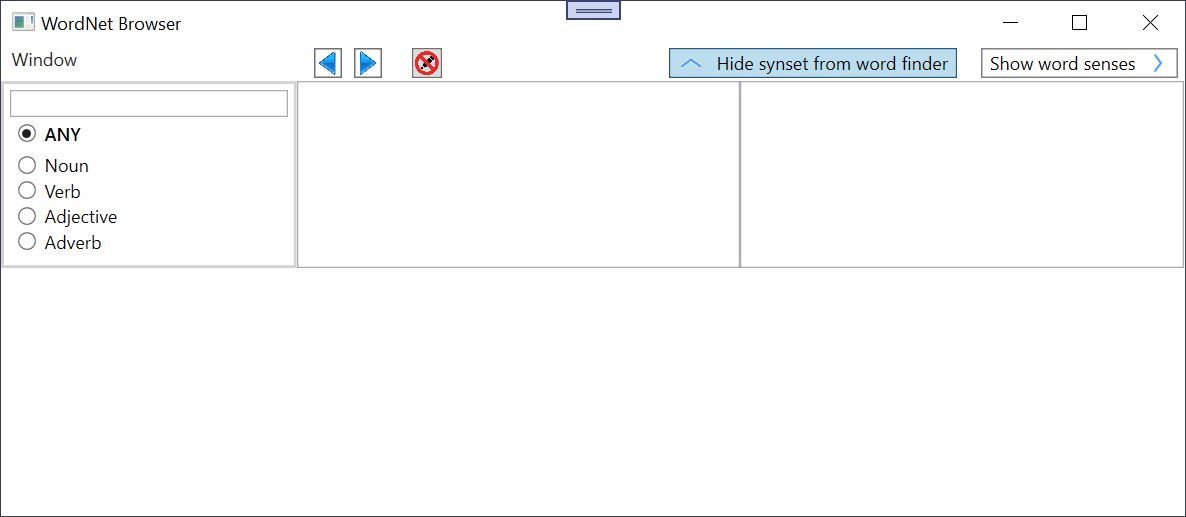
If we select a part of speech and enter a word in the text box, the browser displays synsets that are linked to a matching word sense:
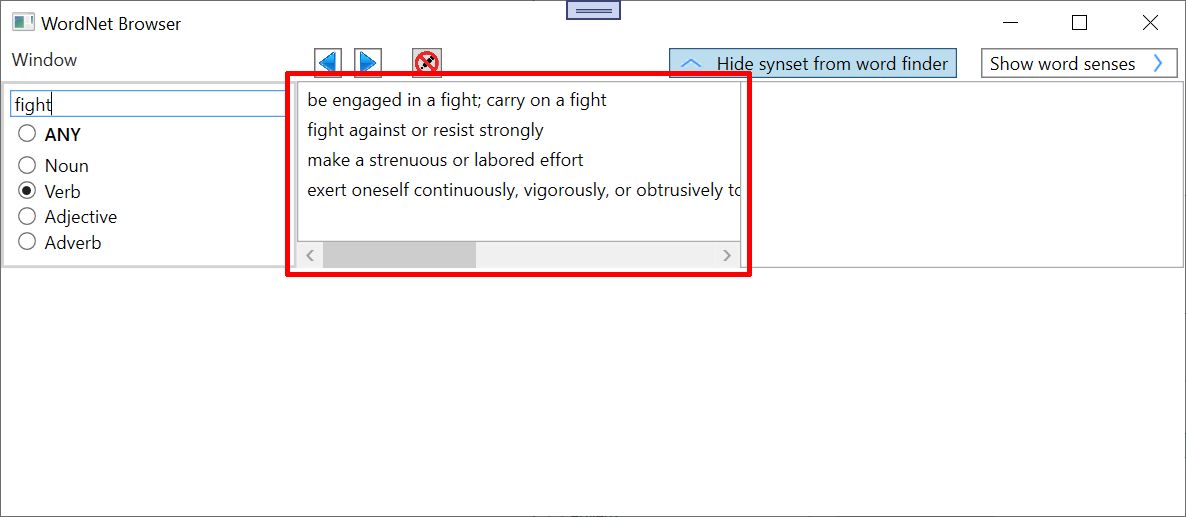
When we select one of the synset glosses from the list, usage examples for that synset are displayed in the right-hand list:
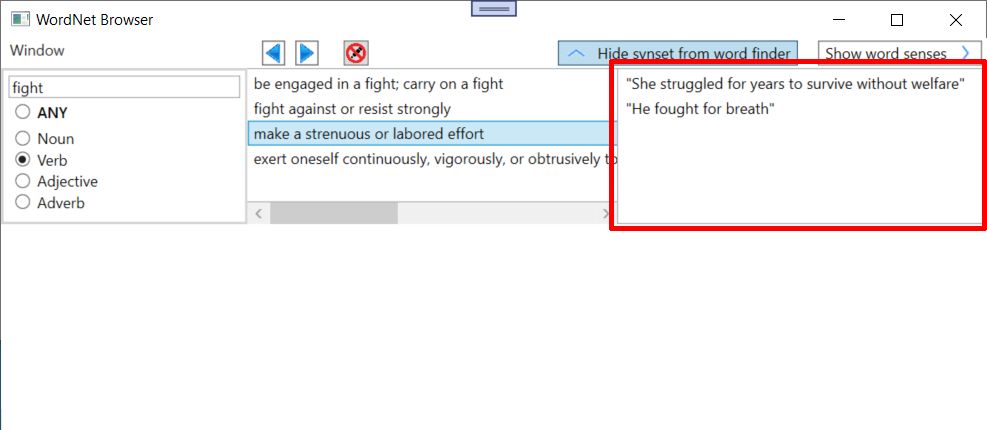
If the selected gloss and the usage examples are what we’re looking for, we can focus the browser on that synset by double-clicking on its gloss:
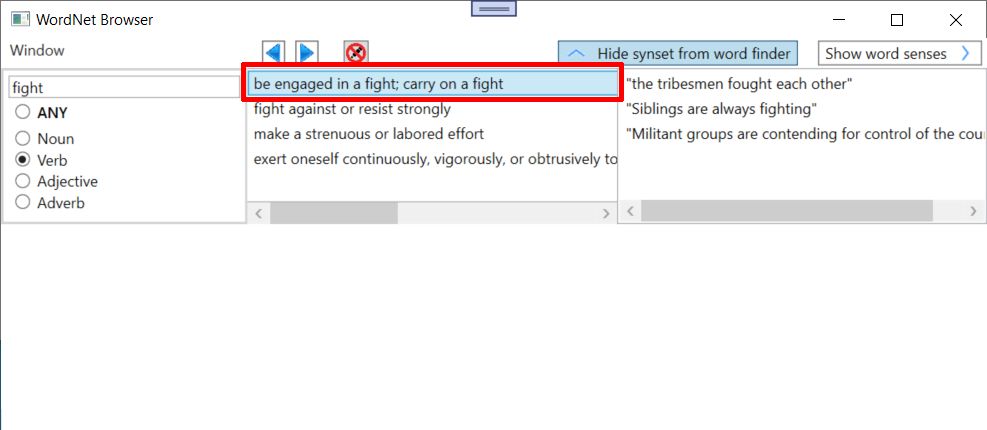
By double-clicking on a gloss to focus on a synset, we’ve established our toe-hold into WordNet’s semantic network. The “Find synset from word” tool collapses, and details are displayed for the synset that we just selected:
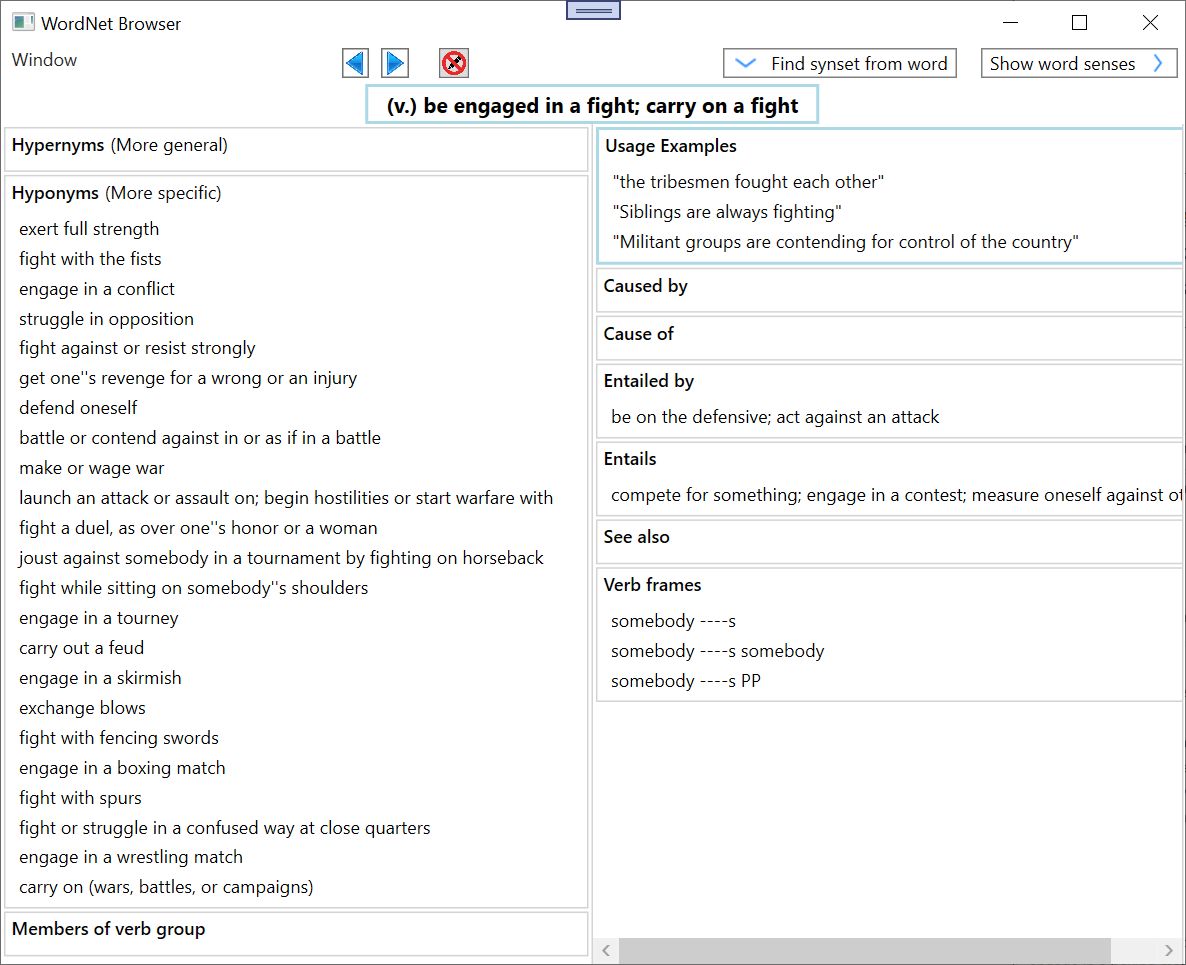
If you’d like to find a different, unrelated synset, you can always get back to the “Find synset from word” tool by clicking its expand / collapse button in the menu bar:
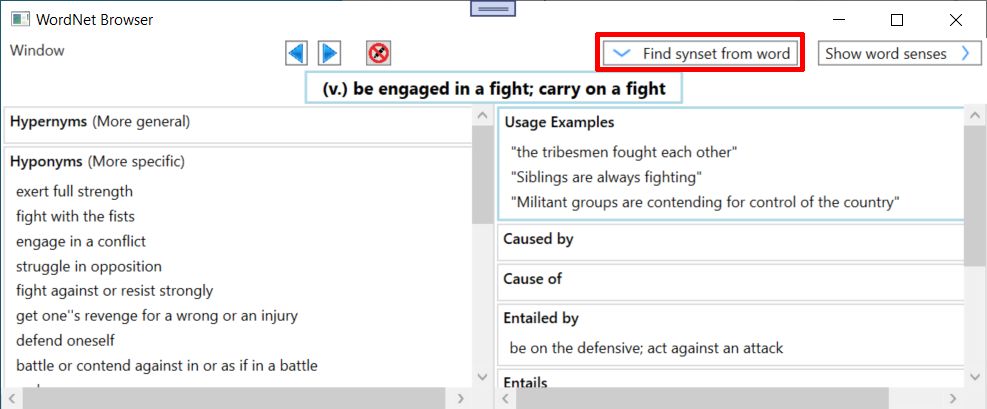
Navigating the semantic network of synsets
The single most interesting and valuable thing about WordNet is its rich network of links between synsets; and the browser UI provides a simple and intuitive means of navigating this network of links.
Most – but not all – of the lists in the synset navigator contain synsets that are adjacent to the focused synset, through one or more of the relation types defined in WordNet.
In WordNet, the particular relations that can apply between two synsets depend on the parts of speech of both synsets. The user interface dynamically configures itself to show the appropriate relations for the focused synset.
For example, this figure shows the relations for the verb synset be engaged in a fight; carry on a fight:
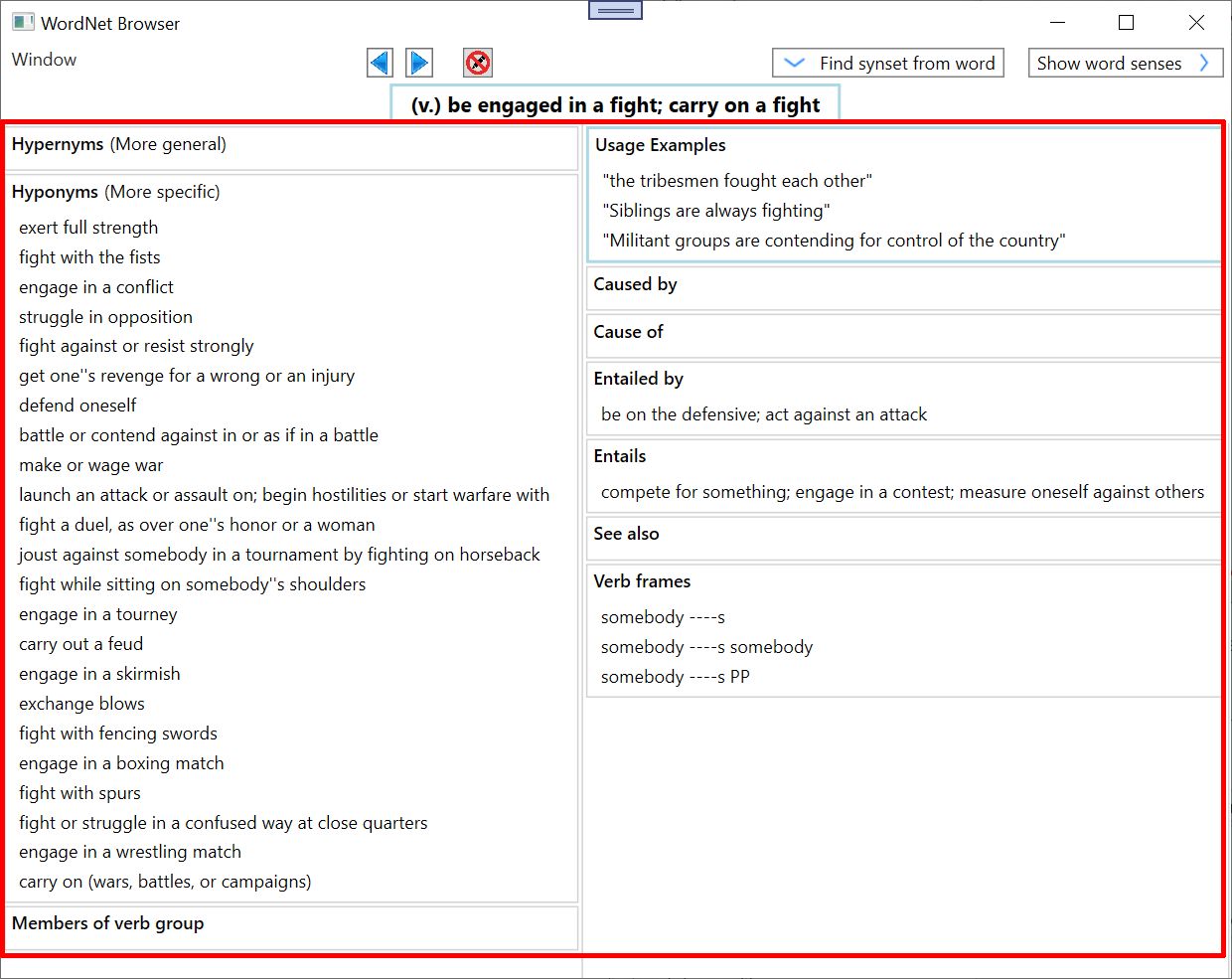
And here are the relations for the adjective synset delighting the senses or exciting intellectual or emotional admiration:
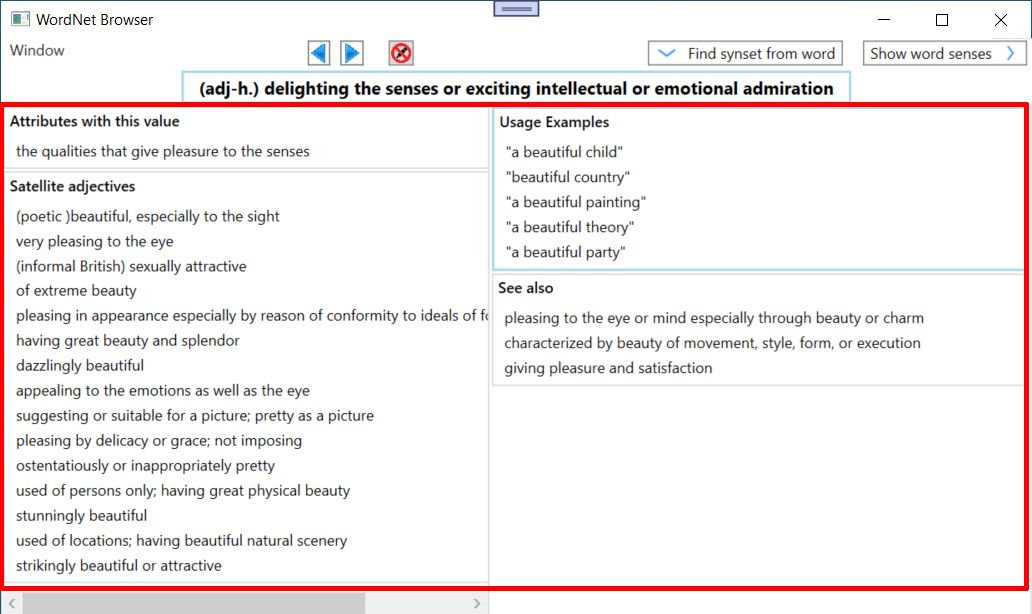
For relations that link to adjacent synsets, double-clicking on the gloss of a related synset will follow the corresponding link, and focus the synset navigator on the selected adjacent synset. For example, one of the hyponyms of be engaged in a fight; carry on a fight is make or wage war:
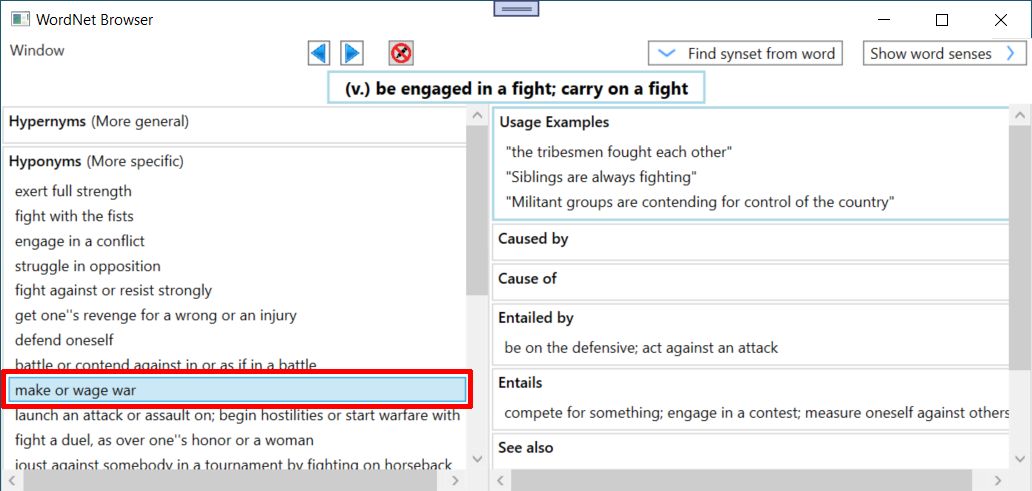
Double-clicking on make or wage war causes that synset to become the new focus of the synset navigator:
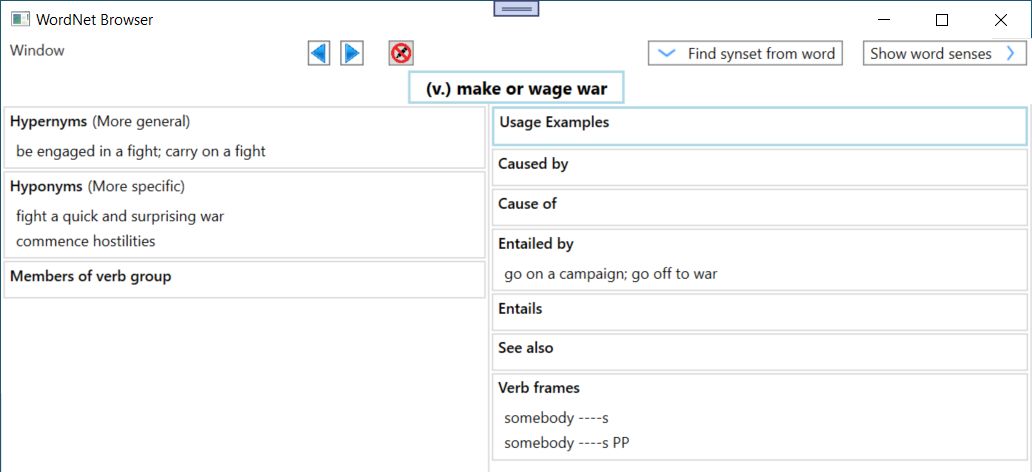
The Previous and Next buttons in the menu bar / toolbar work just like the corresponding buttons in a web browser, allowing you to navigate forward and backward through the history of visited synsets.
Navigating word senses
To show word senses linked to the synset focused in the synset navigator, click the “Show word senses” toggle button:
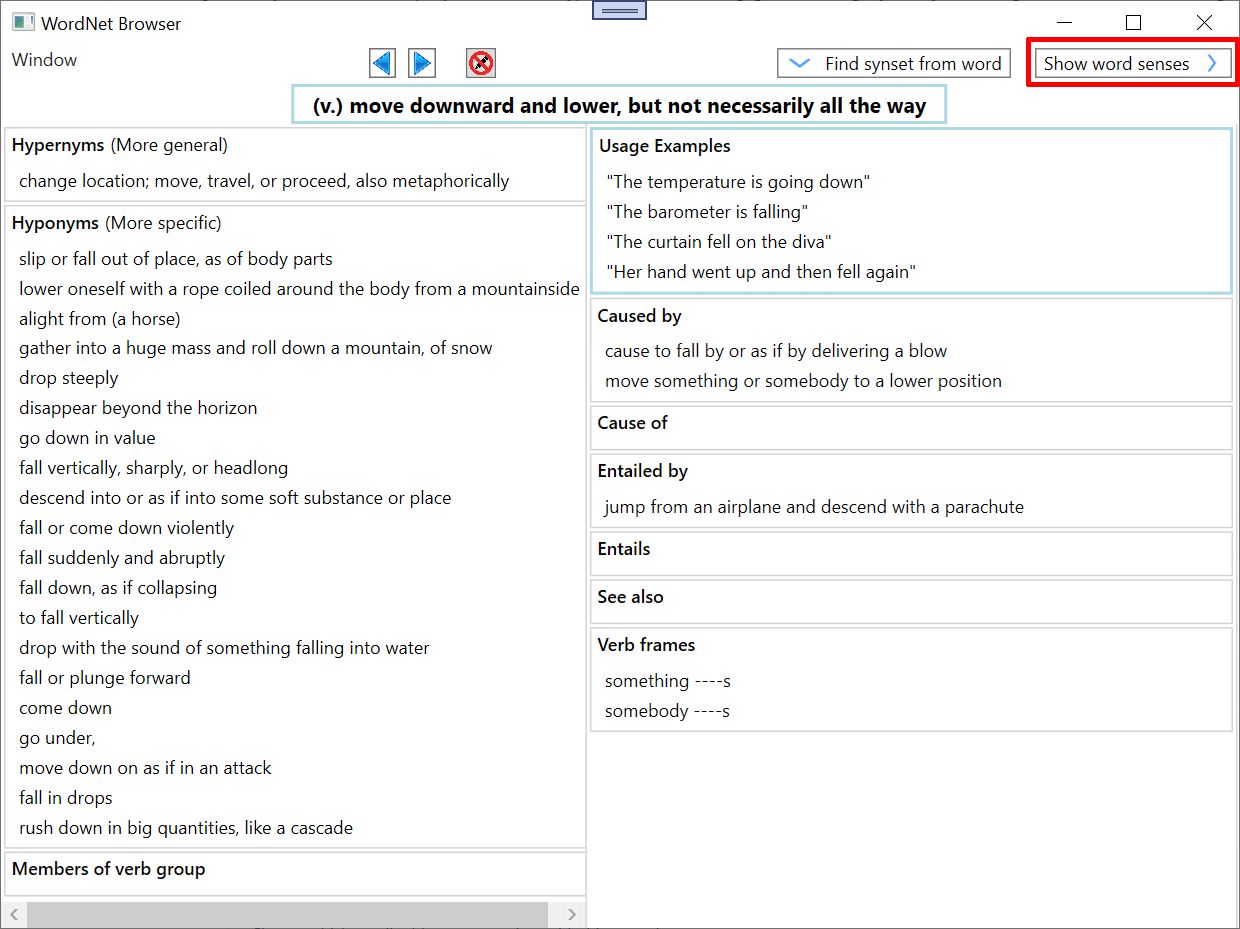
This action opens the word senses navigator. At the top of this navigator is a list of the word senses related to the focused synset:
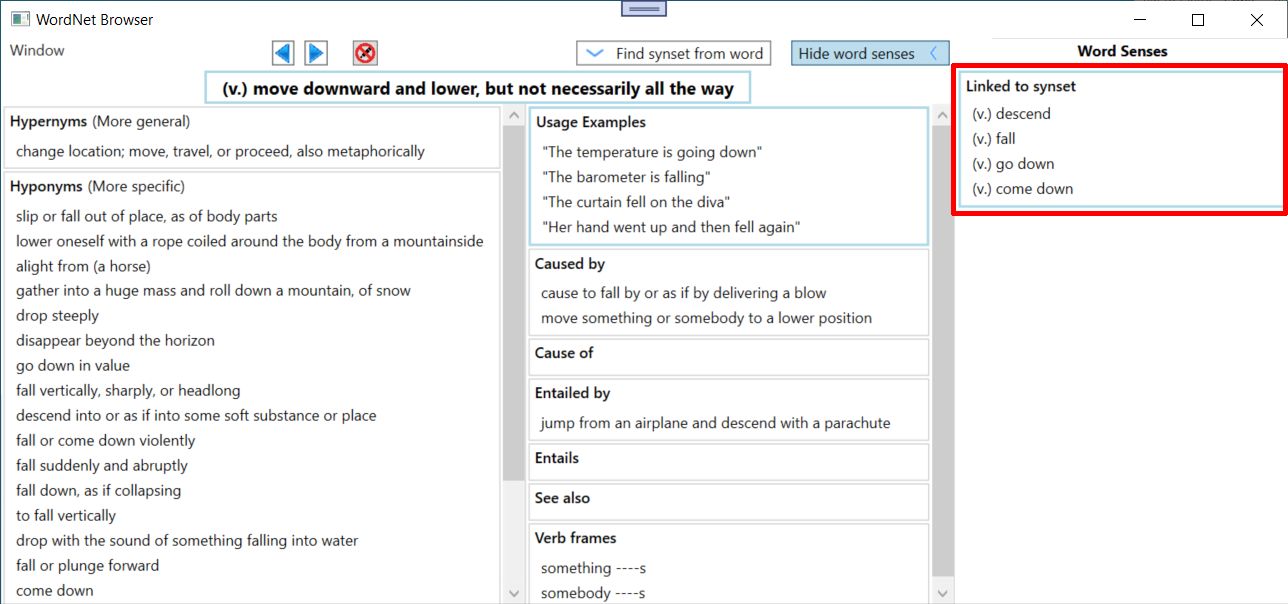
Double-clicking a word sense in this list makes that word sense the focus of the word sense navigator:
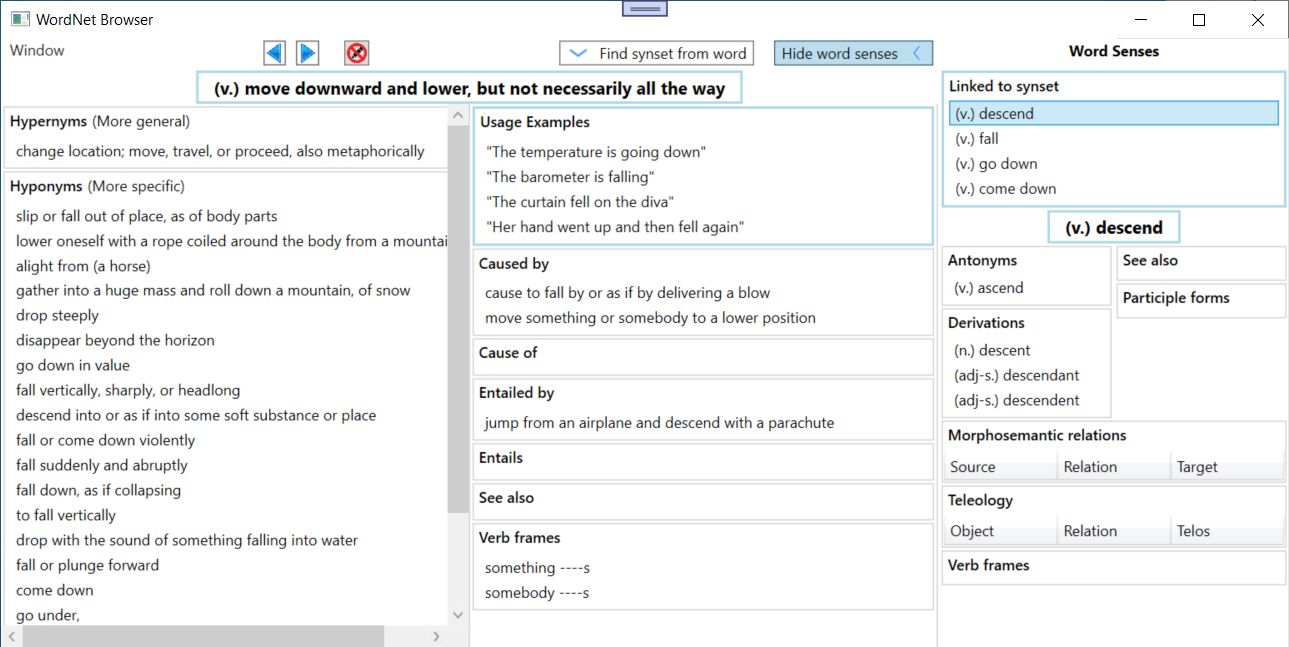
The word sense navigator is similar to the synset navigator: Many of its lists contain word senses adjacent to the focused word sense, through relations defined in WordNet. For example, descendent is an adjective derived from the verb descend:
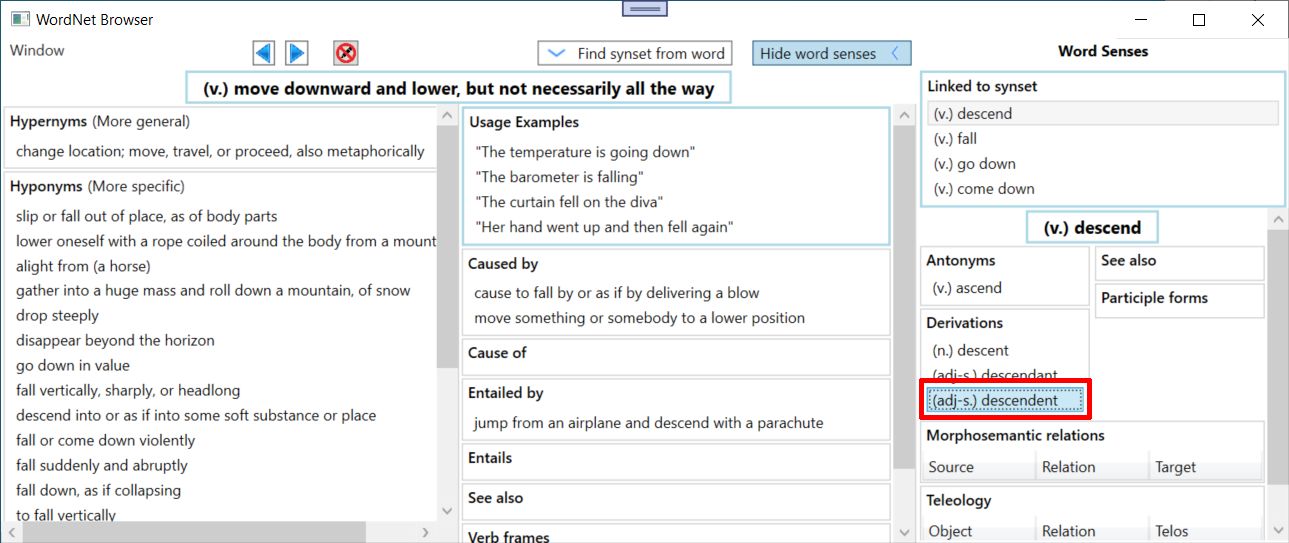
If we double-click descendent in the related Derivations list, descendent becomes the new focus of the word senses navigator:
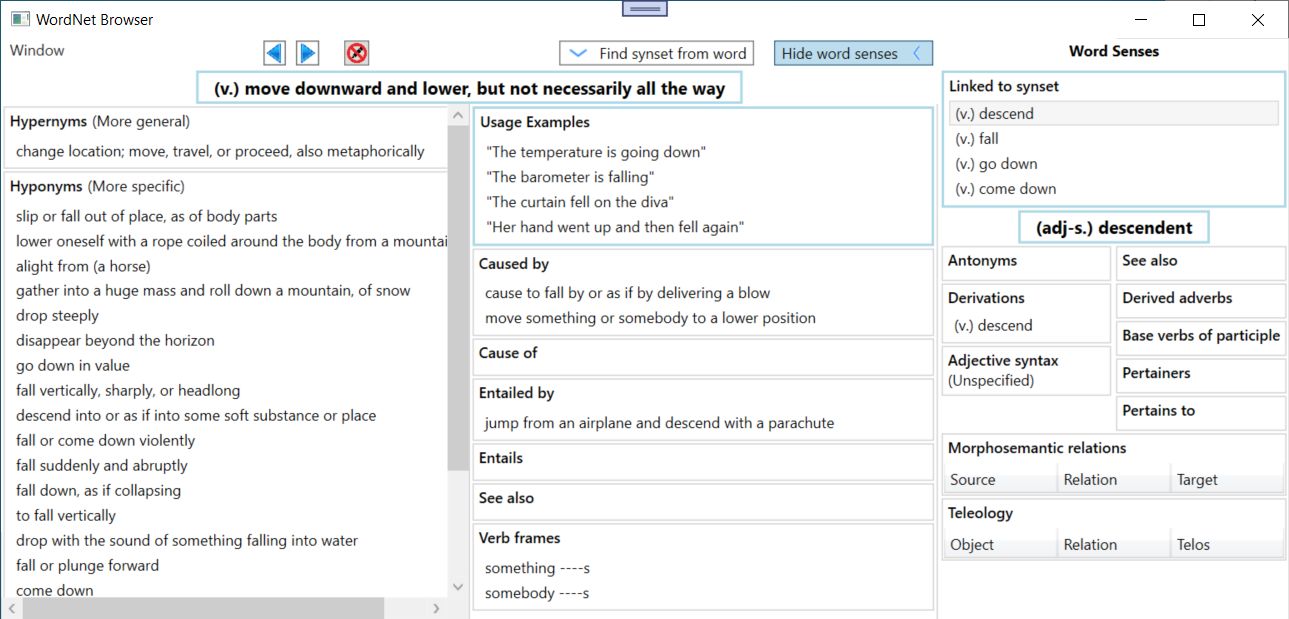
The adjective word sense descendent is linked to a different synset than the verb synset move downward and lower, but not necessarily all the way. To make the descendent synset the focus of the synset navigator, you can drag its word sense header and drop it onto the synset gloss header:
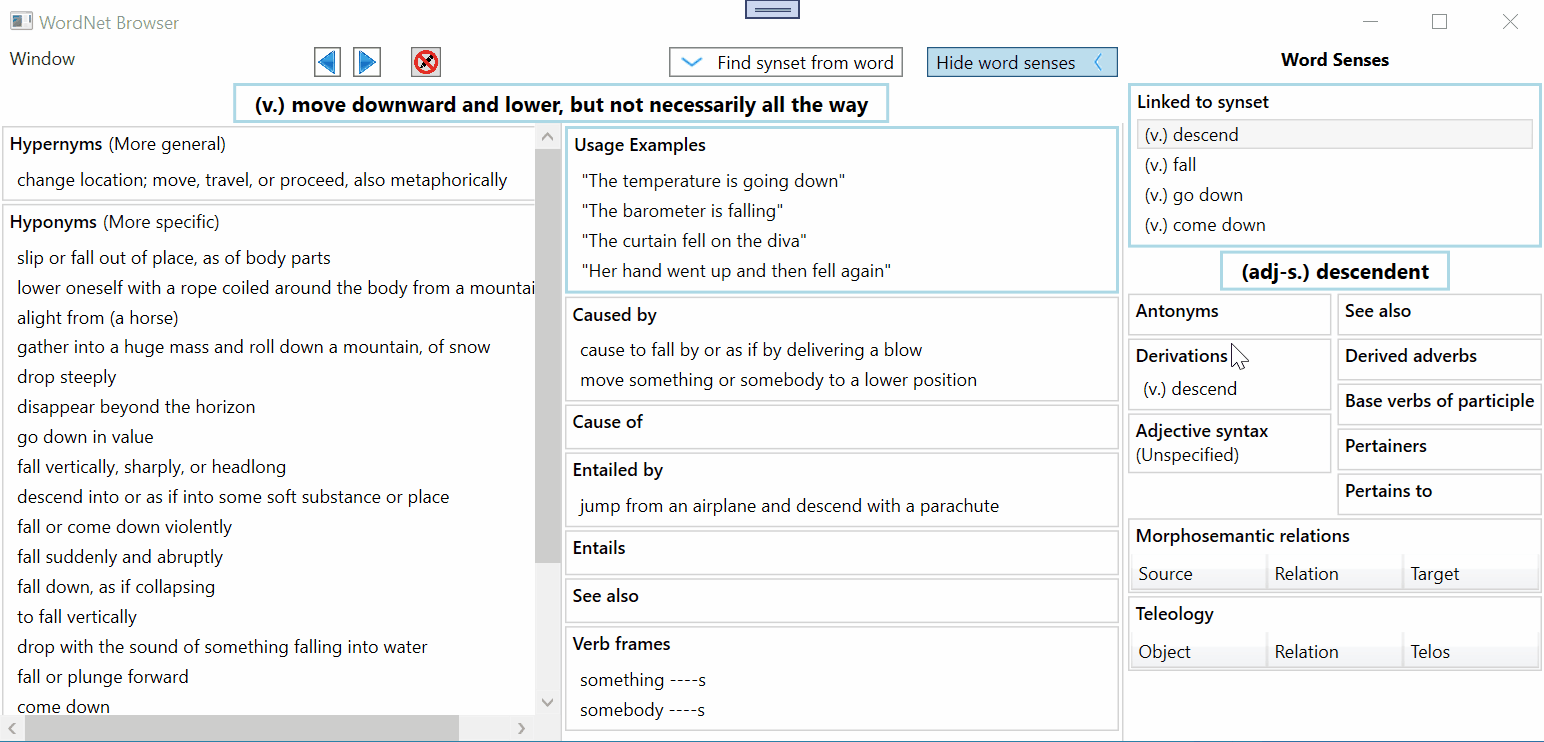
Notice that the border of the synset gloss header changes to a green color, to indicate that it is a valid drop target for the object being dragged.